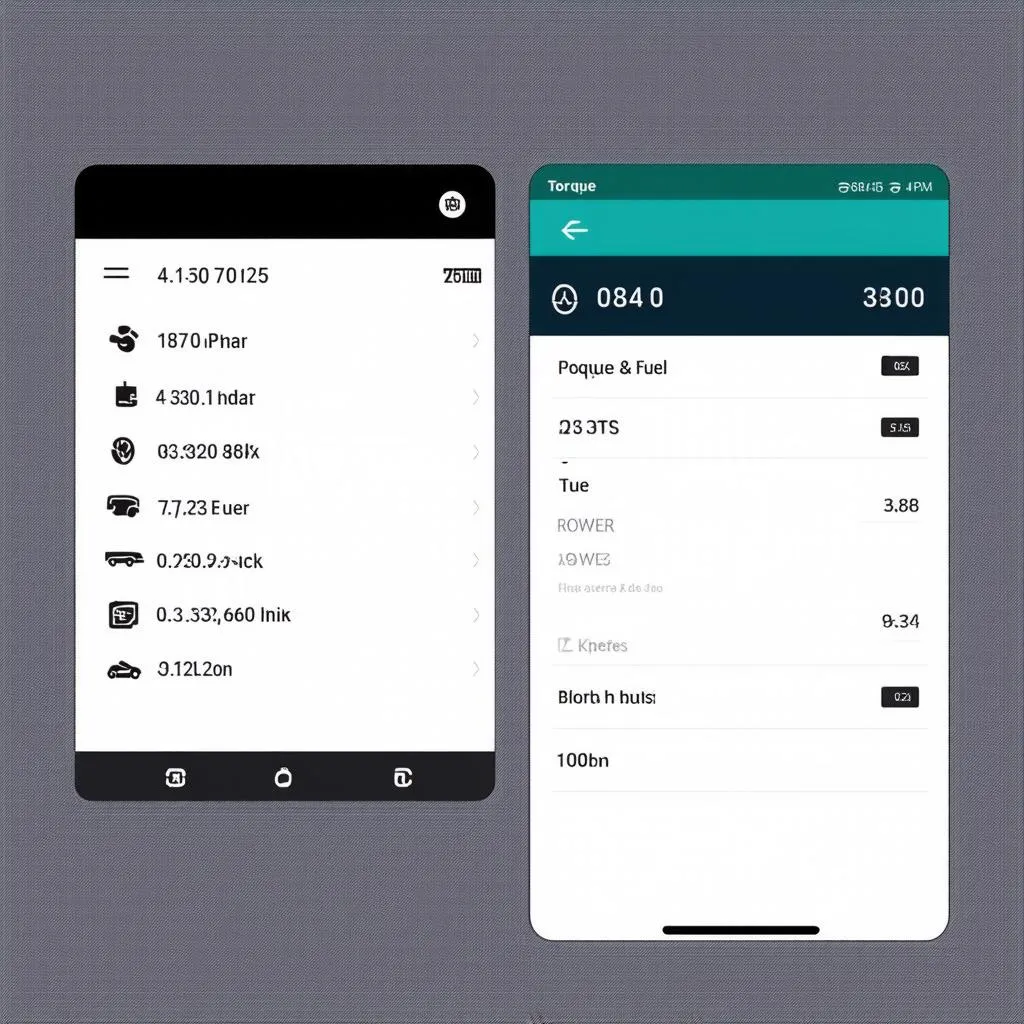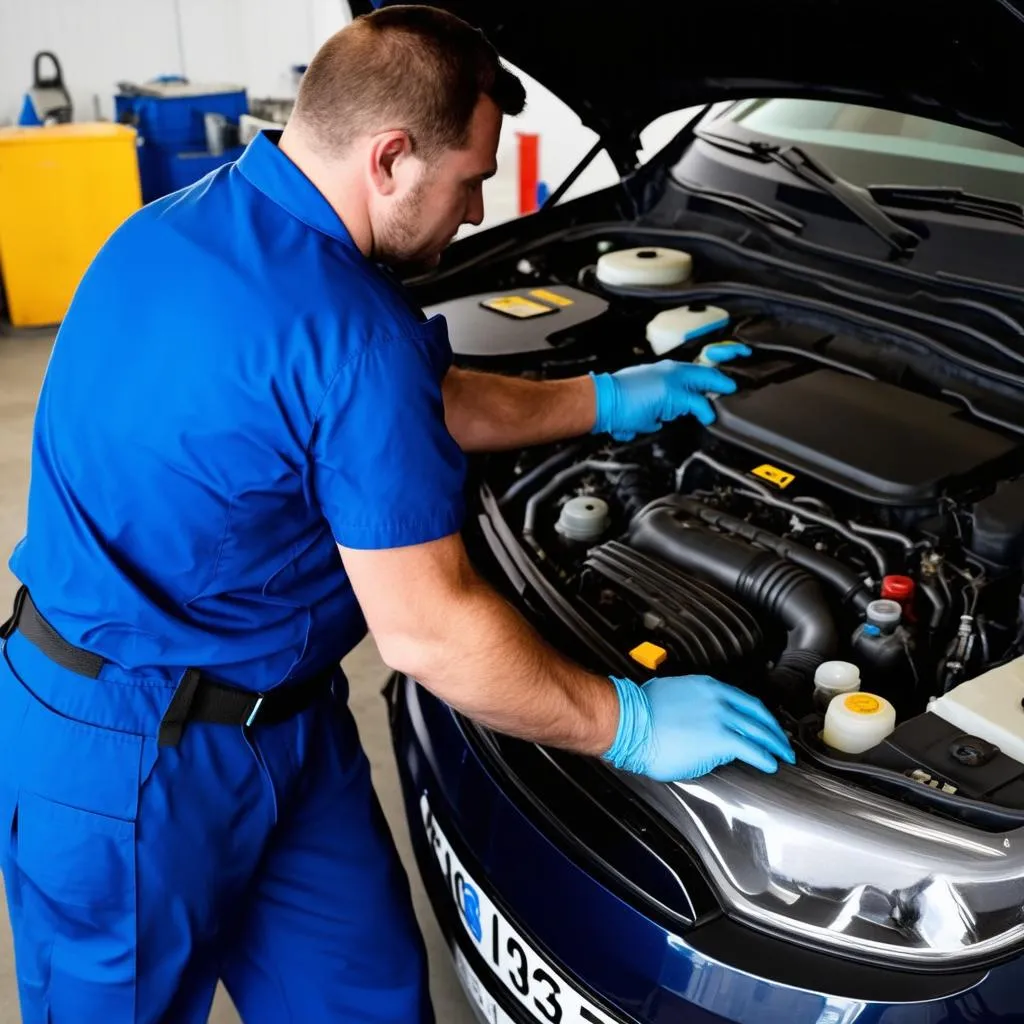Imagine this: you’re cruising down the highway, enjoying the open road, when suddenly a thought pops into your head. “Hmm, I wonder how much gas I have left?” You glance at your fuel gauge, but it’s not very precise. You wish there was a way to get a more accurate reading, maybe even some insights into your fuel economy. This is where OBD-II scanners and apps like Torque come in. But can they really reveal the secrets of your fuel status? Let’s dive in and find out!
Decoding “Does Torque Obd-ii Show Fuel Status?”
This seemingly simple question actually touches upon several fascinating aspects of modern cars:
1. The OBD-II Port: A Gateway to Your Car’s Soul
Think of your car’s OBD-II port (usually located under the dashboard) as a digital nervous system. It constantly monitors various systems, including the engine, transmission, and emissions.
2. Torque OBD-II: A Powerful Interpreter
Torque is a popular Android app that pairs with a Bluetooth OBD-II scanner to access and display your car’s data.
3. Fuel Status: More Than Meets the Eye
“Fuel status” can mean different things: the amount of fuel remaining, fuel consumption rate, fuel pressure, even potential fuel system issues.
So, Can Torque Really Show Fuel Status?
The answer, like many things in life, is: it depends.
Here’s the deal:
- Basic Fuel Level: Torque can often access and display your fuel level percentage, giving you a more precise reading than your car’s gauge.
- Advanced Fuel Data: Getting information like fuel pressure, fuel trim readings (which indicate how the engine is adjusting fuel delivery), or detailed fuel economy calculations might be trickier. Some car manufacturers restrict access to this data for aftermarket tools like Torque.
Think of it this way: Imagine trying to understand a foreign language. You might pick up basic phrases (like fuel level) easily, but more complex grammar and vocabulary (advanced fuel data) might require specialized dictionaries (specific car makes and models) or even fluency in the language (manufacturer-level diagnostic tools).
Unlocking the Full Potential: Factors at Play
- Car Make and Model: Some cars, particularly older European models, are notoriously tight-lipped about sharing data.
- OBD-II Scanner Quality: A cheap, generic scanner might not be able to access all the data a higher-end one can.
- Torque App Settings: You might need to explore different settings or custom PIDs (Parameter IDs) within Torque to unlock specific fuel-related information.
Expert Insight: “It’s like a puzzle,” says automotive electronics guru, Dr. Sophia Chen, author of “The Connected Car: A Deep Dive.” “Finding the right combination of hardware, software, and vehicle compatibility is key to accessing those deeper layers of data.”
 Torque OBD-II App Screenshot
Torque OBD-II App Screenshot
Common Questions About Torque and Fuel Status
Q: My Torque app isn’t showing any fuel data at all. What could be wrong?
A: First, double-check that your OBD-II scanner is properly paired with your phone and that the app has permission to access Bluetooth. Next, ensure you’re using a compatible OBD-II adapter for your car model. If issues persist, exploring online forums dedicated to Torque and your specific car model can provide valuable troubleshooting tips.
Q: Can Torque help me diagnose why my fuel economy has dropped?
A: While Torque might not pinpoint the exact cause, it can offer valuable clues. Monitoring parameters like fuel trim readings, oxygen sensor data, and engine load can help you identify potential issues like a failing oxygen sensor or a vacuum leak, which could be affecting your fuel efficiency.
Q: Is it worth investing in a more expensive OBD-II scanner for better fuel data?
A: If you’re serious about monitoring and optimizing your fuel consumption, a higher-end scanner with more advanced features and compatibility might be a worthwhile investment. These scanners often come with additional software that offers more detailed analysis and reporting capabilities.
Beyond the Technical: Fuel Efficiency and Feng Shui
Interestingly, there’s a parallel between optimizing your car’s fuel efficiency and the principles of Feng Shui. Both emphasize balance and harmony:
- In Feng Shui, a cluttered and disorganized space can disrupt the flow of energy, leading to stagnation.
- In your car, a poorly maintained engine, clogged air filters, or even an overpacked trunk can hinder fuel economy, creating a metaphorical “blockage.”
Just as clearing clutter in your home can create a sense of peace and flow, keeping your car well-maintained and avoiding unnecessary weight can enhance its efficiency and your driving experience.
 Mechanic Inspecting Car Engine
Mechanic Inspecting Car Engine
Keep Exploring: More Automotive Insights Await!
- Curious about other parameters Torque can read? Check out our article on “Top 10 Things You Can Do With Torque OBD-II.”
- Want to learn about dealer-level scanners for European cars? Dive into our in-depth guide on “Choosing the Right Dealer Scanner for Your European Vehicle.”
Need Help? We’re Just a Message Away!
For personalized assistance with Torque, OBD-II scanners, or any car diagnostic needs, don’t hesitate to reach out to our team of experts on WhatsApp at +84767531508. We’re here to help you navigate the world of automotive technology and keep your car running smoothly!
Drive Smart, Drive Informed
Remember, knowledge is power, especially when it comes to your vehicle. Understanding what data your car can provide and how to interpret it empowers you to become a more informed and proactive car owner. So, buckle up, explore the possibilities, and enjoy the ride!